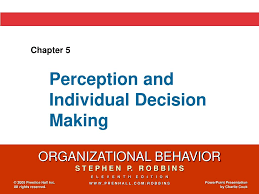The Group Decision Making Process
Group decision making is a crucial aspect of many organizations and teams. When a group of individuals come together to make a decision, it can lead to innovative ideas, diverse perspectives, and better outcomes. However, the group decision making process can also be complex and challenging.
There are several key steps involved in the group decision making process:
- Identifying the Problem: The first step in the process is to clearly define and understand the problem or decision that needs to be made. This sets the foundation for the rest of the process.
- Generating Alternatives: Once the problem is identified, group members should brainstorm and generate potential solutions or alternatives. Encouraging creativity and open communication is essential during this stage.
- Evaluating Alternatives: After generating a list of alternatives, the group must evaluate each option based on criteria such as feasibility, cost, impact, and risks. This step involves critical thinking and analysis.
- Making a Decision: Once all alternatives have been evaluated, the group must come to a consensus on which option to pursue. This may involve voting, discussion, or other decision-making techniques.
- Implementing the Decision: After a decision is made, it is important to create an action plan for implementation. Assigning responsibilities, setting deadlines, and monitoring progress are key components of this step.
- Evaluating the Decision: Finally, it is crucial for the group to reflect on the decision-making process and its outcomes. Assessing what worked well and what could be improved helps inform future decisions.
In conclusion, effective group decision making requires clear communication, collaboration, critical thinking, and a structured process. By following these key steps and fostering a positive team dynamic, groups can make informed decisions that lead to successful outcomes.
5 Essential Tips for Effective Group Decision Making
- Encourage open communication and active listening among group members.
- Consider all perspectives and opinions before making a decision.
- Establish clear goals and objectives for the decision-making process.
- Assign roles and responsibilities to ensure everyone contributes to the discussion.
- Use consensus-building techniques to reach agreement and minimize conflicts.
Encourage open communication and active listening among group members.
Encouraging open communication and active listening among group members is essential for a successful group decision-making process. When team members feel heard and valued, they are more likely to contribute diverse perspectives and ideas. Active listening promotes understanding and empathy, leading to better collaboration and consensus building. By fostering an environment where everyone’s voice is heard and respected, groups can make more informed decisions that take into account a range of viewpoints, ultimately leading to more effective outcomes.
Consider all perspectives and opinions before making a decision.
When engaging in the group decision-making process, it is essential to consider all perspectives and opinions before reaching a final decision. Each member of the group brings a unique viewpoint and valuable insights that can contribute to a more well-rounded and informed decision. By actively listening to and incorporating diverse perspectives, the group can explore different angles, identify potential blind spots, and ultimately make a more thoughtful and inclusive decision that takes into account the needs and concerns of all stakeholders involved.
Establish clear goals and objectives for the decision-making process.
Establishing clear goals and objectives for the decision-making process is crucial in ensuring that the group stays focused and aligned towards a common purpose. By clearly defining what needs to be achieved and the desired outcomes, group members can work together more effectively towards reaching a consensus. Clear goals and objectives provide a roadmap for the decision-making process, guiding discussions, evaluations, and ultimately leading to a more informed and successful decision. Clarity in goals also helps in keeping the group motivated and committed to achieving the desired results.
Assign roles and responsibilities to ensure everyone contributes to the discussion.
Assigning roles and responsibilities is a valuable tip in the group decision-making process as it helps ensure that everyone actively contributes to the discussion. By clearly defining each member’s role, individuals are empowered to share their expertise, perspectives, and ideas, leading to a more comprehensive and well-rounded decision-making process. Assigning responsibilities also helps in maintaining focus, organization, and accountability within the group, ultimately enhancing collaboration and increasing the likelihood of reaching a successful outcome.
Use consensus-building techniques to reach agreement and minimize conflicts.
Utilizing consensus-building techniques in the group decision-making process can be highly effective in reaching agreement and minimizing conflicts. By encouraging open communication, active listening, and compromise among group members, consensus-building fosters a sense of collaboration and unity within the team. This approach ensures that all perspectives are considered and valued, leading to decisions that are well-supported and accepted by the entire group. Ultimately, employing consensus-building techniques can enhance the overall quality of decisions made by promoting cooperation and harmony among team members.




